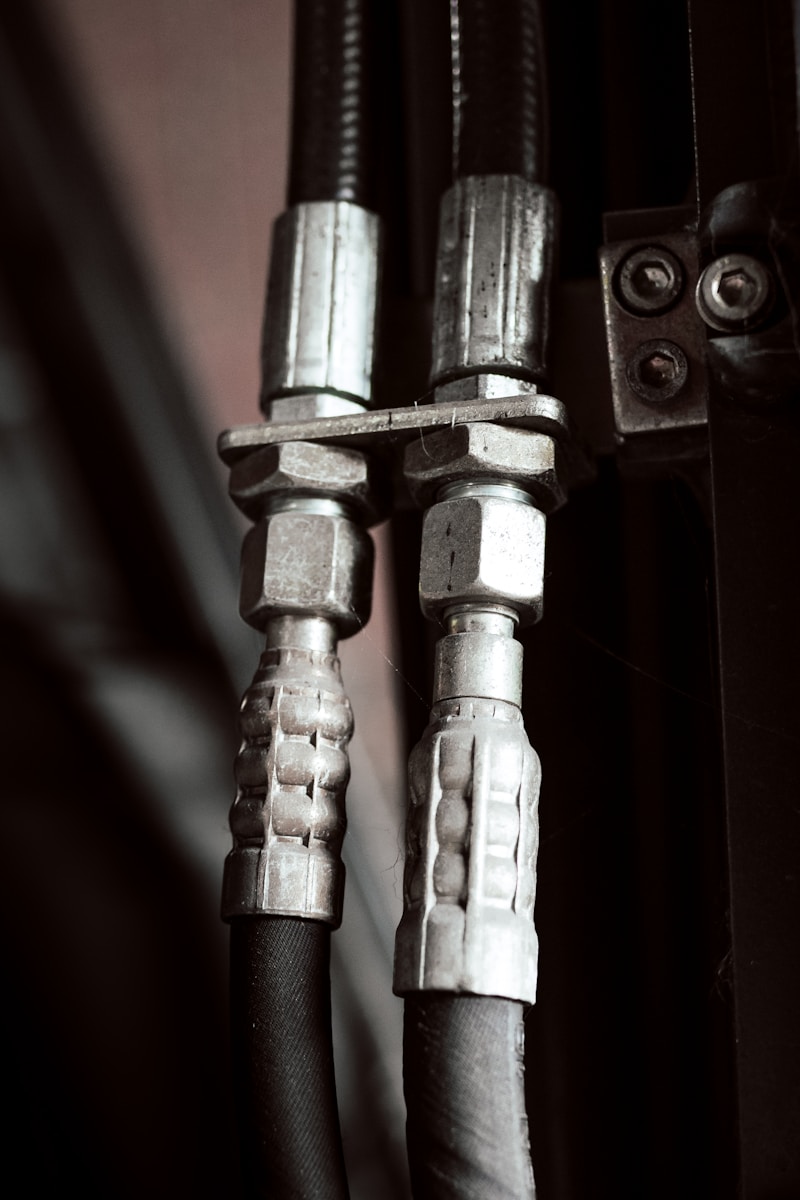Ensuring the safety of high-pressure hydraulic systems is extremely important in many industries, from construction and manufacturing, to aerospace and defense. These systems, which operate under extreme pressure, are integral to machinery that requires precise movement and heavy lifting. Safety and efficiency in these systems highly depend on the use of modern techniques and the best materials to prevent leaks and failures, which can lead to disastrous consequences.
One of the biggest concerns in hydraulic systems is maintaining system integrity under high pressure. This requires an adequate design and engineering precision. Engineers use advanced computational methods to simulate high-pressure conditions and optimize system designs. These simulations help in identifying potential weak points where leaks might occur. After that comes the redesigning process conducted to ensure that components withstand extreme conditions. Material science plays a relevant role here because selecting the right materials can significantly enhance the system’s resilience.
Hydraulic Fittings and Leak Prevention
Hydraulic fittings are crucial in ensuring tight connections in high-pressure systems. The fittings must be able to withstand the system’s pressure without deforming or cracking. For instance, hydraulic fittings from Adaptall fittings are designed for such demanding conditions, being known for their robustness and precision. These fittings help in creating leak-free systems that are vital for maintaining safety and efficiency. They are particularly valued for their adaptability and compatibility with various types of hydraulic hoses and tubing, which are crucial for customized hydraulic systems.
In addition to the flexibility offered by high-quality fittings, they also play a crucial role in operational safety. Effective hydraulic fittings also serve as essential safety components that manage high-pressure fluid transfers. The consequences of fitting failure can be devastating, leading to operational downtime and potential safety hazards. Therefore, selecting reliable fittings becomes a cornerstone in the design and maintenance of safe, efficient hydraulic systems. Their capacity to maintain a secure connection and withstand the cyclic stress and pressure fluctuations typical of hydraulic operations leads to fewer failures and a reduced risk of accidents and contributes to a safer working environment.
Advancements in Materials for Hydraulic Systems
In the case of hydraulic systems, the most widely used metals are stainless steel and aluminum alloys, due to their strength and corrosion resistance. However, some other materials are becoming more and more popular nowadays. For instance, composites and high-performance polymers are well-known for their weight-saving properties and excellent durability under high pressure. These materials are designed to be both lightweight and capable of maintaining their integrity in challenging environments, which reduces the overall stress on hydraulic systems.
The connections and joints in hydraulic systems are just as important as the materials used in manufacturing the pipes and cylinders. Leaks often occur at connection points, where seals or fittings fail under pressure. Ensuring these connections depends on the design of the connection and the choice of sealing techniques and materials. For instance, using O-rings and gaskets made from advanced elastomers can ensure superior sealing properties and longer service life under dynamic pressure changes.
Installation and Maintenance Protocols
The safety of hydraulic systems also depends on the installation process. Installing the hydraulic components properly guarantees that all parts align correctly without undue stress, which usually leads to premature failure. Technicians are trained to perform the latest installation techniques, using tools that provide precise torque and pressure to guarantee that fittings and seals are perfectly secure. Regular training updates help them keep pace with the advancements in technology and materials used in these high-pressure systems.
Another relevant aspect when it comes to the long-term safety of hydraulic systems is maintenance. Scheduled maintenance checks allow for the early detection and replacement of worn parts. This helps in avoiding system failures. Modern diagnostic tools and techniques, such as ultrasonic leak detectors and thermal imaging cameras, are really important parts of these maintenance routines, as they provide early warnings of potential issues before they lead to serious problems.
Embracing Automation for System Monitoring
Transitioning towards automation in monitoring high-pressure hydraulic systems enhances safety measures. Automated sensors and software are able to continuously monitor system performance and pressure levels, providing real-time data that can predict failures and schedule maintenance more efficiently. Such approaches prevent downtime and enhance the overall reliability of hydraulic systems.
Integrating automation into system monitoring also extends to enhancing the precision with which these systems are managed. With the help of sophisticated algorithms and data analytics, operators can monitor and analyze the performance trends over time. With such detailed insights, predictive maintenance is possible, which means that potential issues are addressed before they become actual problems. Moreover, the data collected can be used to refine system designs and optimize performance. This leads to a more efficient and effective use of resources. Automation, therefore, enhances the safety and reliability and drives continual improvement in system management and operation.
System Integration and Environmental Compliance
There are many other benefits of automation in system monitoring. Those are amplified by its ability to integrate seamlessly with existing hydraulic components and systems. Modern automated monitoring systems are designed to be retrofitted into older setups and even included in new designs without requiring extensive overhauls. This means that businesses can upgrade their safety standards without having to spend a lot on complete system replacements. Additionally, the adaptability of these automated tools allows for customization. They can be designed to meet specific operational needs, and enhance their applicability across various industries where hydraulic systems are essential.
Furthermore, automated monitoring systems contribute to environmental sustainability efforts. If they operate accordingly, these tools help minimize the risk of leaks and spills that can lead to environmental damage. Regular and precise monitoring leads to less waste of hydraulic fluids and reduces the incidence of hazardous spills, which aligns the operational practices with increasing regulatory demands for environmental protection. Automation in hydraulic system monitoring becomes a must in the case of businesses aiming to maintain competitive and compliant operations.
Conclusion
The safety of high-pressure hydraulic systems relies on a complex approach that incorporates modern design techniques, advanced materials, precise installation, and diligent maintenance. As technology advances, integrating automated monitoring and innovative materials will continue to play a pivotal role in enhancing the safety and efficiency of these widely-used systems. Ensuring the integrity and reliability of these systems prevents operational failures and also safeguards the lives of those who operate and rely on this equipment daily.







Leave a Reply